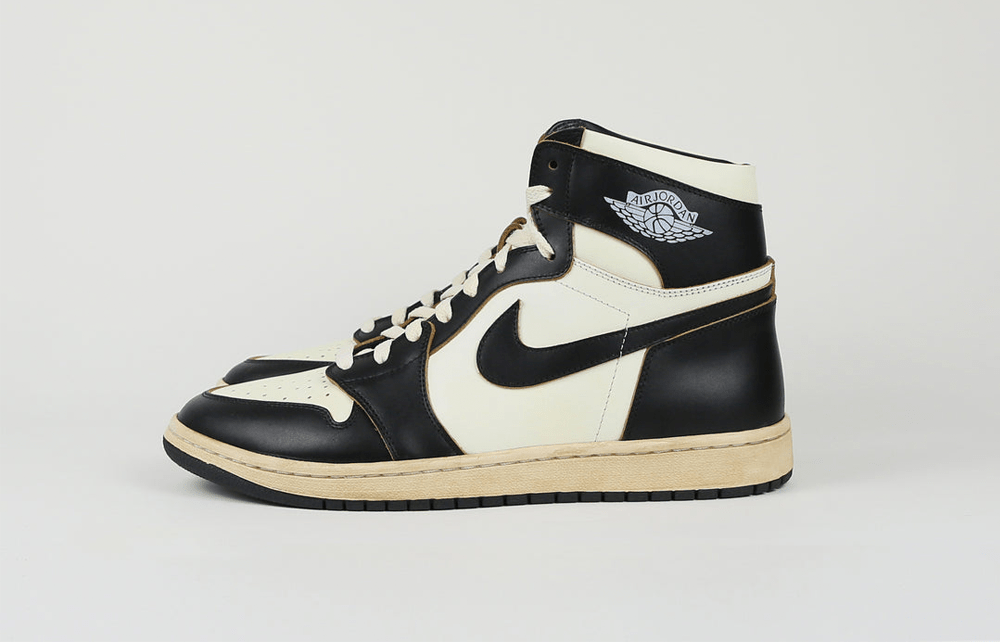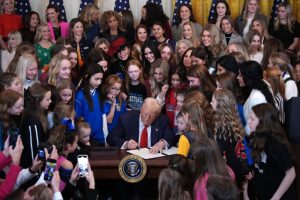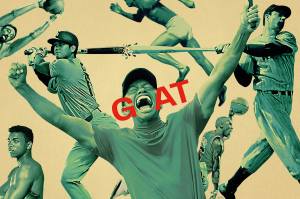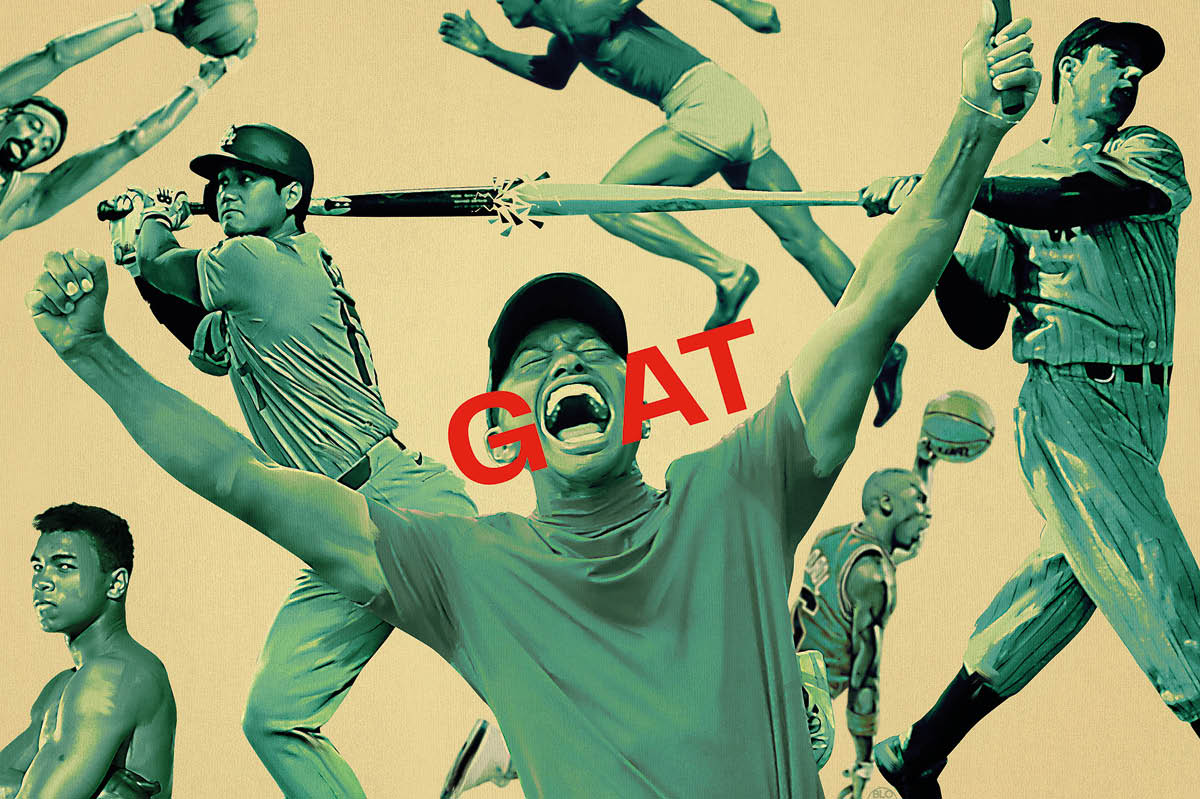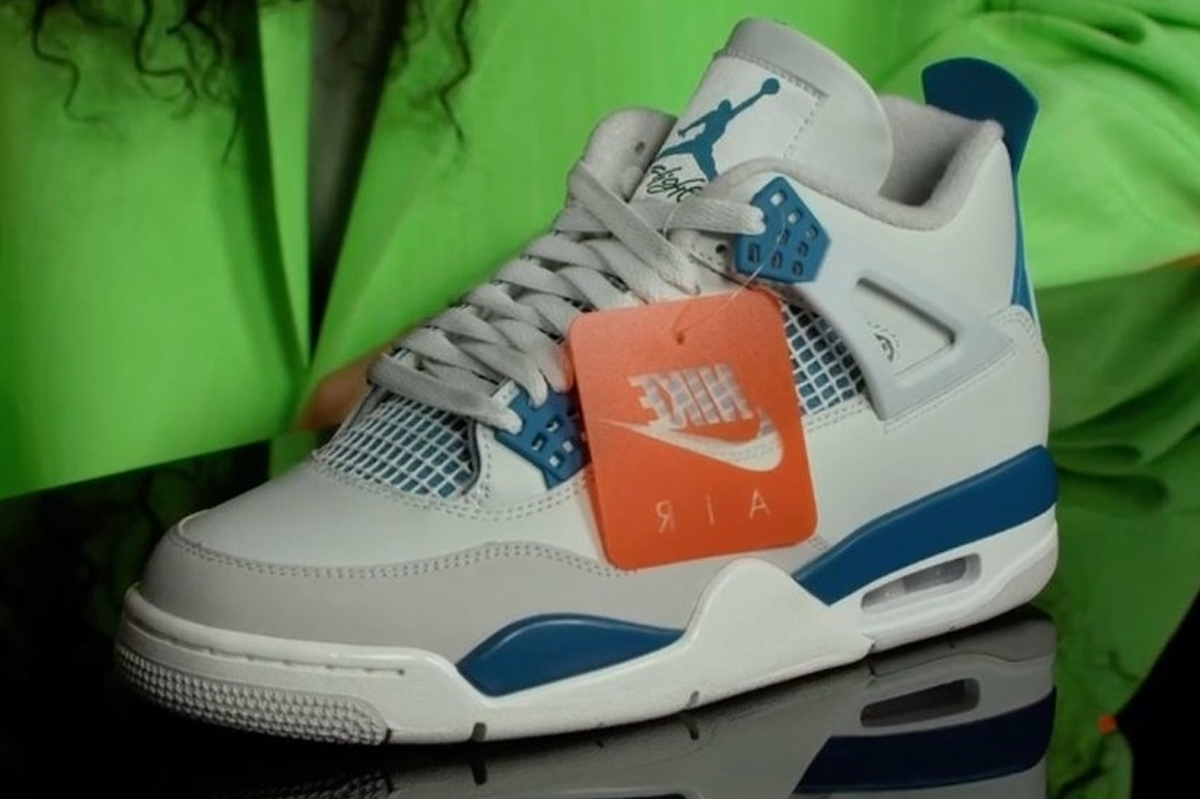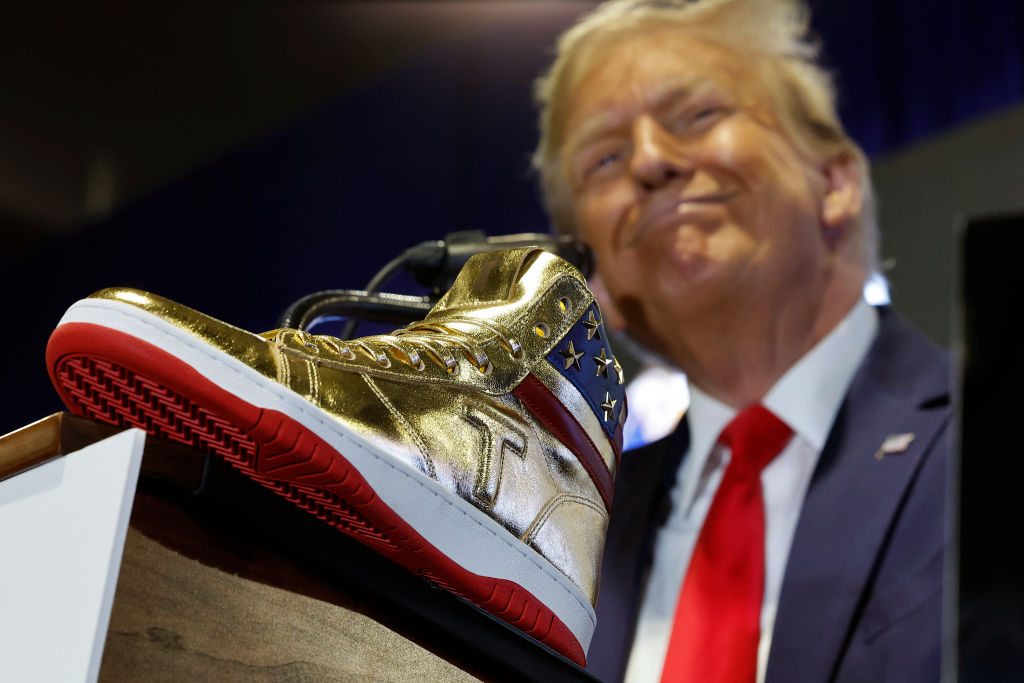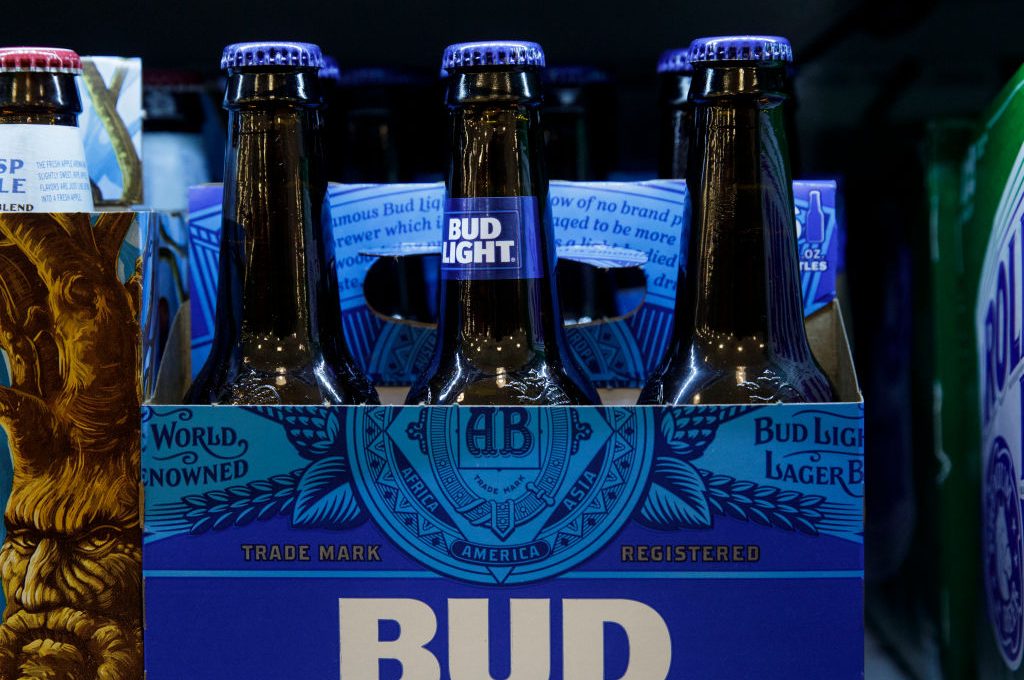These shoes aren’t real.
They’re not NFTs or AI-generated. They’re actual shoes. They look like Nikes but, for the most part, they weren’t made by Nike. They’re the work of Hvnd Studio, a small team of Korean cobblers who work in a legally-dubious cottage industry, recreating the original, 1985 Jordan 1 with top-quality leather and classic techniques. They’re fakes. They’re beautiful. And they cost $1,250.
If Nike is the sneaker brand, then the 1985 Jordan 1 is the sneaker. It’s a classic of twentieth-century product and a pop-culture icon, tied to the mythos of Michael Jordan. These days, an unworn original pair with its box can sell for more than $20,000. Adding to the allure is the shoe’s messy path to cultural reverence. Michael Jordan didn’t want to sign with Nike, preferring Adidas. When Peter Moore showed Jordan the design of his to-be titular shoes, the rookie responded, “I’ll look like a clown.” Its production proved rocky, with the shoes unavailable until November of Jordan’s rookie year — he played in the similar Nike Air Ships in the meantime — and though the Air Jordan sold out on first release, Nike significantly overproduced the restock. The shoes sat on shelves for months, or even years, eventually reduced by as much as 70 percent, from $65 to less than $20.
By the start of the twenty-first century, however, people were nostalgic for the shoes they dreamt of as kids; and in the sixteen years since they debuted, Michael Jordan had gone from a promising rookie to the NBA GOAT. The “Jordan” line became one of the most successful sneaker lines of all time and the Jordan 1 was where that all started.
But, with each re-release, the shoes changed. The heel and collar curved in. The toe box became taller, wider and fatter. The mud guard, at the end of the eye stay, lost its curves. What was once a lean, sharp-lined tall shoe softened into something closer to a fat wedge; and they’re not the buttery leather sneakers that kids dream of. New Jordan 1s are made from “action leather” — a thin layer of poor-quality “splits” suede, coated with a thick polyurethane lacquer. Unworn, the shoes look good, but that laminate quickly creases and disform. And these days Nike has a less than stellar reputation for quality control. Botched releases and artificial scarcity mean the average person can often only buy their desired pair — at a high mark-up — on secondary markets like StockX and Goat.
People buy a pair of Jordans so they can feel like Mike. Instead, they often feel cheated. And that’s where companies like Hvnd Studios step in; small firms, perfectly replicating the original shoes, with top craftsmanship. They’re “fakes,” but they bring the magic back.
The Hvnd process starts with a brand-new pair of real Jordans. The team then strips them down to the sole and spends four to six weeks replacing the “upper,” recreating every detail of the original, 1985 shoes in high-grain Korean leather. The upper is then hand-lasted to the sole. Hand-lasting is the centuries-old, traditional technique of making shoes, where the leather “upper” is wrapped around the last and nailed to the underside of a stiff insole-sized lasting board, before being bonded and sewed to the sole.
In other words, Hvnd Studio is a very different business to your neighborhood teen repainting his shoes. They don’t even use paint. Rather, each piece is dyed at Korean tanneries, often requiring several attempts until the color is just right. The only way to get the best foam for the shoe tongues was to buy in bulk. Hvnd’s YoungWoo shows me three huge, 100M rolls of the stuff, of which they use less than twenty square centimeters per shoe. The bill of materials for a Nike shoe is estimated at between $20 and $40. For Hvnd, it varies from $350 to $700, depending on the donor shoe.
It’s afternoon in Seoul when I call YoungWoo Choi at the Hvnd Studio offices. Partially constructed shoes sit beside sewing machines on metal tables. Samples are stacked on shelves. Leather offcuts and lasts (the molds that shoes are made around) sit tidily in the background. They’re finishing up the testing process for their latest line, featuring “metallic” Jordan 1s. They’ve been developing the material for a year and a half.
As we talk, YoungWoo compares three different pairs of shoes on the table in front of him — a pair of 2022 “Heritage” Jordan 1s, an original 1985 pair, in the Chicago colorway, and his own creations, in beautiful white and cyan. The differences are individually subtle but meaningful when taken together, and being able to make them this way is far from easy. “It would be easy to deconstruct a pair of ’85s, then scan and copy the parts, but that doesn’t make sense because the leather is stretched,” YoungWoo tells me. “Even if you take apart a deadstock pair, it would be stretched from the lasting process, and you couldn’t just fit an original upper to the new sole anyway, as the shape of new soles has changed a lot.”
Their shoes are the end of a path that involves dozens of sample shoes, five versions of their ’85 Jordan pattern, and an obsessive focus on every detail of those original shoes. The result is something that does more than just recreates the ’85 Jordan 1s, but surpasses them. As YoungWoo explains, “People think the OG ’85s have nice leather, but they’re really don’t. It’s bad. It’s not too different from the retros that Nikes makes these days, honestly. There was this big discussion between me and my coworkers; are we supposed to make this as shitty as possible, to replicate the ’85, or are we supposed to make it better?”
The one piece that they share with the 1985 shoes is their last. Though the Hvnd team had initially developed their own, to get the shape just right, they needed Nike’s originals: and luckily, in 1985, Jordan 1s were made in South Korea. “We were pretty sure they had to be somewhere in this country,” YoungWoo tells me. After months of searching, they finally tracked down a factory worker with a set of the original lasts. Having copied and tweaked them for Nike’s new, wider soles, Hvnd can now make shoes closer to the originals than anyone else — including Nike.
It’s easy to be cynical about the quality of current Nike products. It feels bad to spend $180 on a new pair of shoes, only for them to crease badly after a few weeks, and for you to learn the bill of materials was less than $40.
Nike even implicitly acknowledges their disappointing quality by offering higher-quality, higher-cost retro versions of current shoes. This year, they’re rumored to be planning a “Wings” series of ultra-premium Jordan 1s — priced at a Hvnd-comparable $1,500.
Surely Nike should be able to do better — but it’s not that simple, particularly when you produce at their scale. As famous former VP of the Jordan Brand, Gentry Humphrey, summarized to me: “There are a ton of factors that play into material choices and selection; some of which, in some cases, there is control and in other cases, things are beyond the decision makers control.”
Hvnd Studio made 200 shoes last year. Nike made tens of millions. As a result, modern Nikes aren’t hand lasted but bound using Strobel machines, where the upper is sewn to a thin fabric sheet, and this “sock” is then bound to the sole. As famed former-Nike engineer Tiffany Beers tells me, “Strobeling is way faster, way more repeatable than hand lasting.” Millions of people want Jordans 1s, and you can’t produce that many, at $180, if you hand last.
All the above is premised on buying your desired shoe, from Nike, at the retail price. But the most hyped-up shoes are really only available on secondary markets. In the 2000s, customers would line up outside sneaker stores, excitedly awaiting the release of a new shoe; but it was an inefficient system, reducing the number of potential customers, and often sparking fights or even riots. These releases moved online, to in-app raffles, which was far cleaner. But the overwhelming majority are unable to purchase a highly desired shoe anywhere but on the second hand-market; and they’re paying Louis Vuitton money for something far below Louis Vuitton quality. The $800 mark-up on a pair of Travis Scott Jordans, for example, is a product of scarcity, not craftsmanship.
Not all rip-off sneakers are as expensive as Hvnds. “Replicas have a bad name because companies want you to stay poor,” YouTuber Cedaz, whose channel is focused on the sneaker market, tells me. Making the case for “reps,” he explains: “Nike is releasing shoes for $120 and immediately they’re $600-1,000 on the resale market because bots buy every pair. Without Nike solving the botting issues, I won’t be supporting their business. Whereas, buying reps supports the brand without giving extra money to a kid reselling the shoes. It allows you to have full creativity with outfits, without financial struggle.”
Just as the Jordan 1 changed, fake products have too. The days of Canal Street two-stripe “Abibas” are long gone. Nike inadvertently transformed the market. Their artificial scarcity made customers comfortable with shoes from alternative marketplaces, and high resale prices reduced the mental barriers around buying fake products — particularly when few could tell them apart from the real. Most importantly, the footwear industry’s massive scale and drive for lower costs sent most shoe manufacturing to China; particularly Putian.
Putian City is a shoe manufacturing hub and the global capital for fake shoes. There are reportedly more than 10,000 factories within its boundaries; and many of its underpaid workers happily earn an extra dime by selling along patterns and early samples to the counterfeit factories around them.
One such producer is “UABAT”: part-middleman, part-manufacturer and the kind of hustler that characterizes China’s trademark-violating entrepreneurs. “I used to want to get the limited sneakers, but I never had the money nor luck” he tells me. “So, I started buying replicas, because I just cared about the style and the quality, but they weren’t great. They weren’t the best quality nor were they that close to the real pairs, so I saw an opportunity”.
He has since created an operation that he (and customers) say rivals — and often surpasses — Nike’s quality. He spends weeks to months reverse engineering existing shoes and samples, then collaborates with Putian factories and suppliers to produce them, and sorts delivery and payment for them, while constantly refining the product based on consumer feedback. Ultimately, there’s little magic in a mass-produced, relatively simple sneaker like the Jordan 1; if you have access to the patterns, materials, talent, and supply lines, you can replicate it easily. Getting those four ingredients is usually very hard; but not in Putian. UABAT even claims to use some of the same material suppliers as Nike.
Producers known for their quality, like UABAT, earn a good, work-of-mouth reputation — but the market remains very informal. All this inconvenience and informality is thanks to one thing: reps are illegal. You can’t be penalized for buying them, but they’re counterfeit goods, meaning the purchasing, delivery and returns processes all have less oversight and control than legal goods. This also means that what little oversight Nike has regarding worker rights, pay,and conditions, are completely absent here.
Hvnd Studios avoids some of these problems by starting with a pair of actual Nikes; but they are by not necessarily in the clear legally. They work in the treacherous, murky middle-ground between trademark violation and artistic freedom.
As Professor Mark McKenna of UCLA, an expert on intellectual property law, explains: “The customizers have their own reputations, and they are trading on that as much as, if not more than, the reputation of the original manufacturer. But when the customization takes the form of physically assembling parts of shoes along with other parts they’ve created, there’s some point at which it’s no longer a modification and now just a new product.”
In recent years, the Big Swoosh has brought legal action against companies like Warren Lotas, John Geiger, Kool Kiy, Omi and Japanese street-culture titan Bape — whose products are further from Nike’s trademark than Hvnd’s work.
While YoungWoo was generous with his time, most of the replica manufacturers I approached declined to comment or refused interviews. They play a delicate game of publicity seeking, hoping to attract the attention of customers but not Nike’s lawyers. Gary, the owner of Vibe Remake Labs, was explicit about that when he declined an interview: “I don’t want to get more exposure. It’s not good for me.” His original Instagram page was shut down earlier this year after a complaint by Nike.
Vibe Remake Labs is perhaps the best-known high-end replica manufacturer — but also the most infamous. Their $600 recreations sell by the thousands, to high praise from influencers, but use fake soles, and its generally believed that his shoes are made on a factory line, not to order by hand, and are not hand-lasted.
Kevin Gerdes, a sneaker collector who tells me his shoes are worth “somewhere between €80,000 and €150,000,” was initially skeptical about high-quality imitations: “Over a thousand bucks for some ‘remakes’? But I was blown away when I had them in hand. The box, the dustbag, the shoe itself; the unboxing experience was magic. They’re wearable and look fresh out of the box, but come with all the details of the original ’85 model.”
Gerdes is one of many Hvnd’s customers who also own pairs of the original, vintage ’85 Jordans, but buys recreations for the classic look in a wearable shoe; and to support craftsman who share their passion for the original shoes. YoungWoo says one customer has bought thirteen pairs from them; another bought eight at once. “People are rich, I guess,” he says chuckling.
So how “real” are Hvnd’s shoes? They’re not normal “reps”— a (black) market solution to a market failure — or lazy knockoffs. Rather, they’re meticulous tributes to a classic design, capturing all the original details in a handmade shoe, made in the finest materials. Are they any less “real” than perfectly legal designer shoes that are heavily inspired by Nike? 2021’s Louis Vuitton collaboration Nike Air Force 1s were inspired by the Eighties and Nineties New York customizers, who sewed designer monograms on Nike swooshes. They weren’t official collaborations, but it didn’t make them any less “authentic,” and Nike implicitly agrees.
Hvnd wasn’t started to recreate Jordans. The four friends who founded the company wanted to make a line of high-end golf shoes and just made custom Jordans in their free time for fun, because they love them. When they shared the shoes online, others loved them too, and wanted to order their own; and a few years later, here we are. On some level, the shoes aren’t fake at all. After all, Hvnd’s customers are buying a pair of shoes from Nike; they just happen to be paying extra to have them modified. That skirts trademark violation, but also provides more consumer freedom and choice; and what’s the harm in that?
As YoungWoo put it: “Everyone is arguing about what the difference between a fake and a custom is, and I guess I don’t really care. It’s the product that matters.”
The shoes may be fake; but the sole is real.



